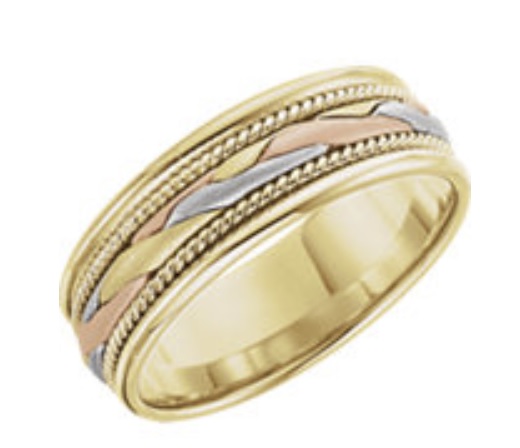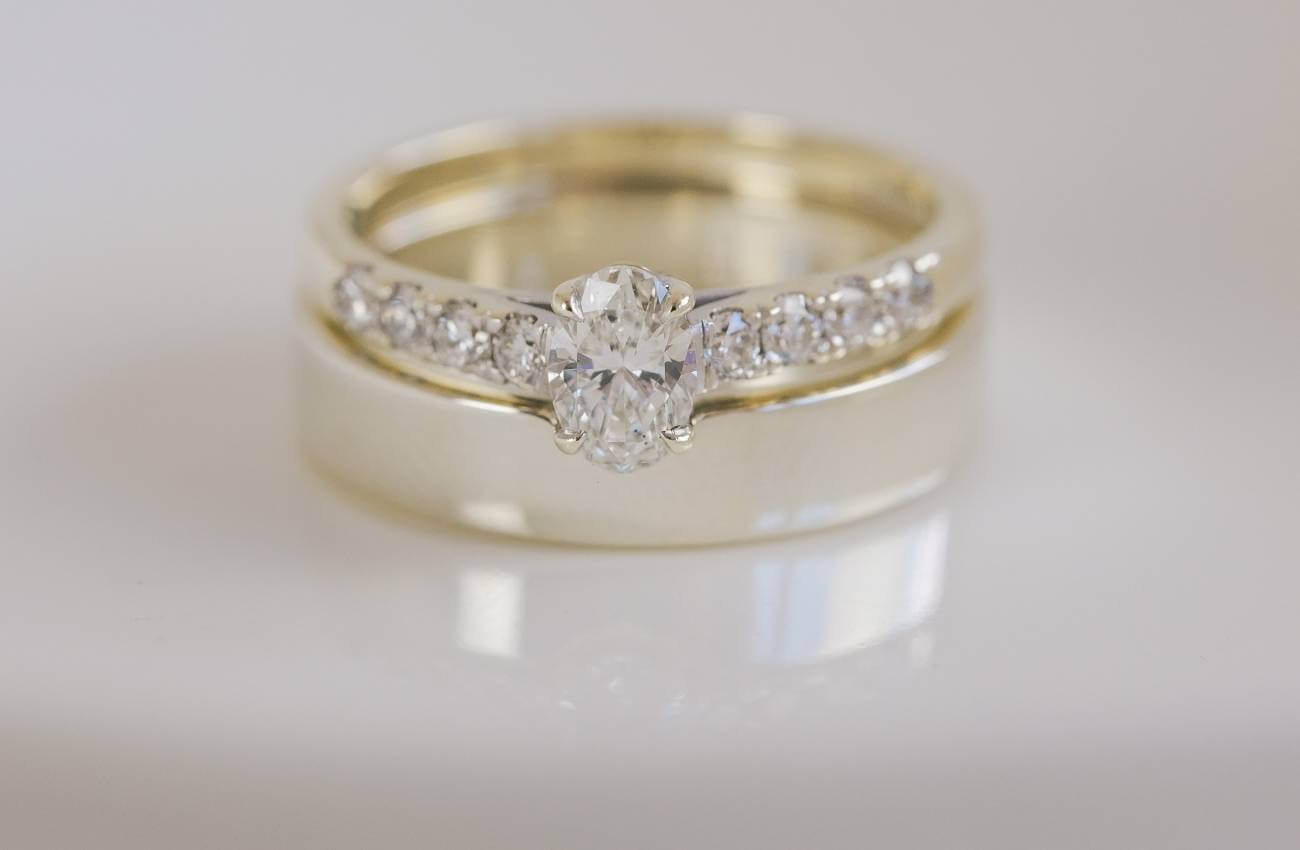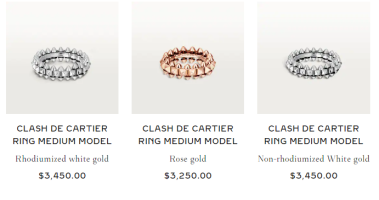Hi!
I was looking at Cartier rings and bracelets on the website The RealReal, and so many of them clearly had gold plating that had worn off and a base metal showing, especially on the Love line. I was shocked, as I had thought that Cartier did not have "plating" but was solid gold. But clearly, a lot of these have a brass base or something because, especially in the white gold versions, you can see the metal underneath (as in the screenshot below).
I've read that they don't do this anymore, but does anyone have any authoritative info on this?
Regarding the Panthere watches, the originals back in the 80s and 90s, had hollow gold links. The ones made now have solid gold links. This is info I got from three different sources, one from a jeweler on youtube (granted, not a strong source but as it turns out, he was correct), one from a local authorized Cartier watch dealer, and one from a Cartier Boutique SA.
While I'm glad that Cartier stepped up its game in both cases, it does make me wary of buying older pieces, and it really makes me wonder why vintage pieces have almost the same value as newer ones when there's such a huge difference in quality.
The fact that they ever chose to skimp on quality also makes me trust them less now with things like the "gold" perfume case I would like to buy. The website doesn't say what it's made of so I can only assume something cheap or wouldn't they say what it is? I'm afraid to buy it because I feel like I can't trust the quality, which makes me sad since Cartier is supposed to represent the highest quality.
Anyone have any information or thoughts on this?
Thanks
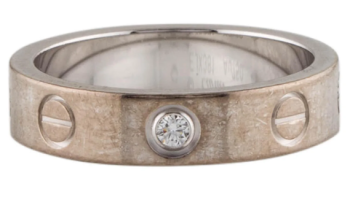
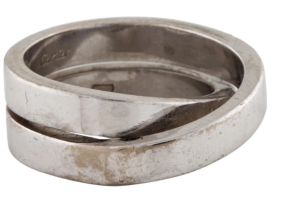
I was looking at Cartier rings and bracelets on the website The RealReal, and so many of them clearly had gold plating that had worn off and a base metal showing, especially on the Love line. I was shocked, as I had thought that Cartier did not have "plating" but was solid gold. But clearly, a lot of these have a brass base or something because, especially in the white gold versions, you can see the metal underneath (as in the screenshot below).
I've read that they don't do this anymore, but does anyone have any authoritative info on this?
Regarding the Panthere watches, the originals back in the 80s and 90s, had hollow gold links. The ones made now have solid gold links. This is info I got from three different sources, one from a jeweler on youtube (granted, not a strong source but as it turns out, he was correct), one from a local authorized Cartier watch dealer, and one from a Cartier Boutique SA.
While I'm glad that Cartier stepped up its game in both cases, it does make me wary of buying older pieces, and it really makes me wonder why vintage pieces have almost the same value as newer ones when there's such a huge difference in quality.
The fact that they ever chose to skimp on quality also makes me trust them less now with things like the "gold" perfume case I would like to buy. The website doesn't say what it's made of so I can only assume something cheap or wouldn't they say what it is? I'm afraid to buy it because I feel like I can't trust the quality, which makes me sad since Cartier is supposed to represent the highest quality.
Anyone have any information or thoughts on this?
Thanks




